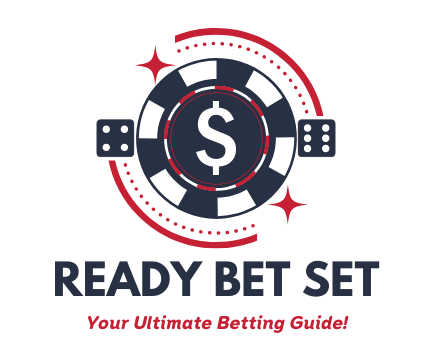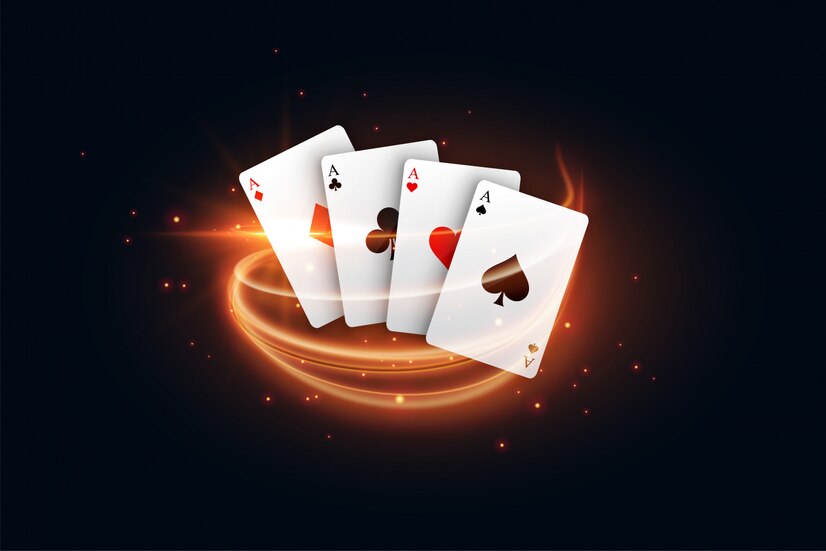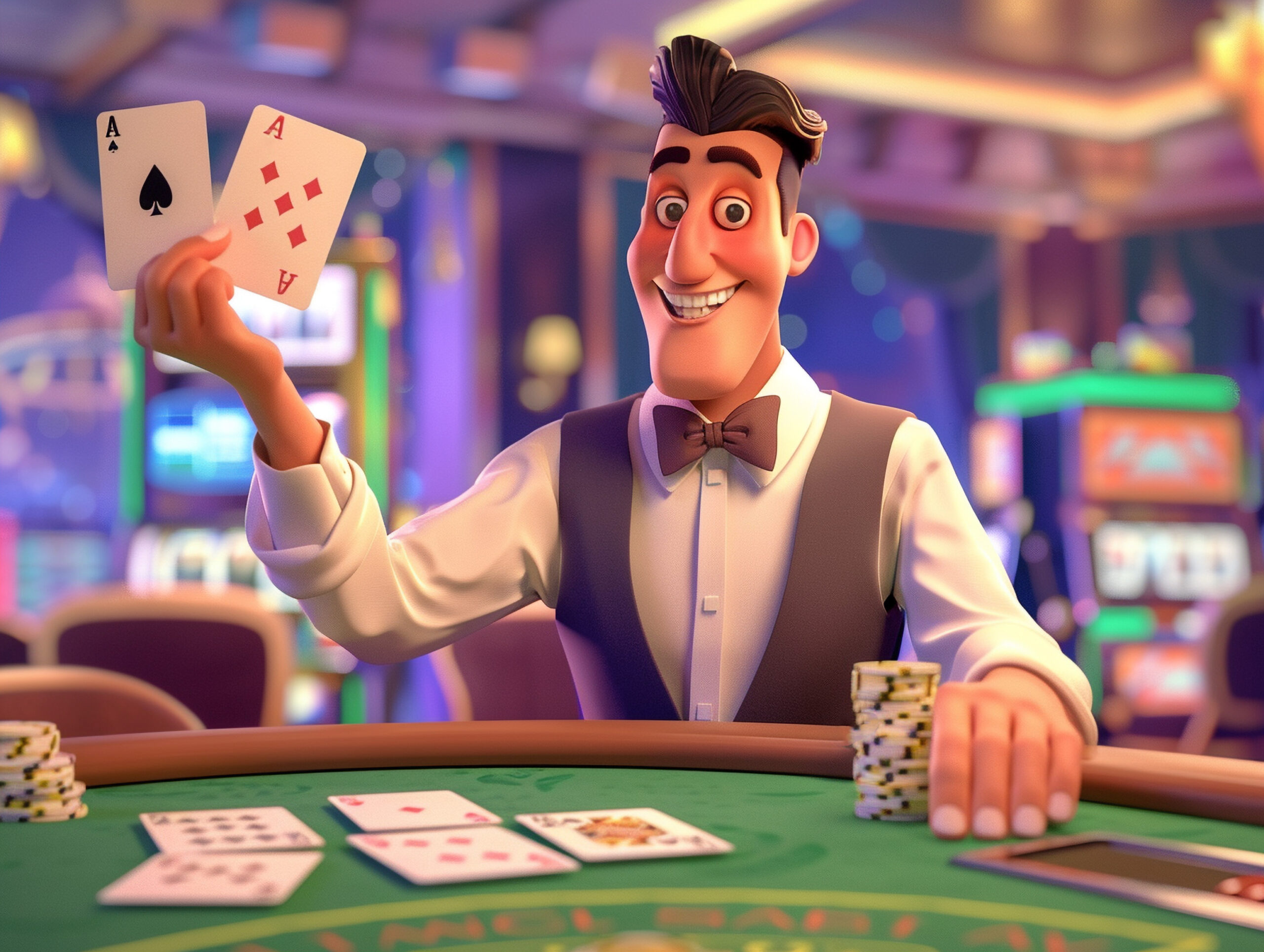Blackjack is more than just a game of luck; it’s a strategic battle against the dealer. A ‘blackjack strategy chart’ is an essential tool for making strategic decisions in blackjack. As we sit at the table, understanding when to hit or stand can mean the difference between walking away a winner or feeling the sting of defeat. The choices we make in those critical moments can shape our entire gaming experience, and mastering this aspect of blackjack is essential for anyone looking to improve their odds.
Understanding Blackjack Basics

Blackjack is a popular card game that combines elements of skill and strategy. Our goal is to beat the dealer by having a hand value closer to 21 without exceeding it. Each player’s hand consists of two cards, while the dealer also plays with a two-card hand, one card face up and the other face down.
Key Blackjack Values
In blackjack, card values play a critical role. Here’s how they break down:
| Card Type | Value |
|---|---|
| Number Cards (2-10) | Face Value |
| Face Cards (King, Queen, Jack) | 10 |
| Ace | 1 or 11 (player’s choice) |
Understanding these values helps us make informed decisions during the game. The objective is to reach a total of 21 or the highest possible hand without going over. Outcomes depend significantly on the total value of our hand relative to the dealer’s visible card. Players often draw other cards during the game, which affects their overall strategy and decisions based on their hand’s total value and the dealer’s up card.
Strategies for Decision Making
When playing blackjack, understanding the value of the dealer’s hand is crucial for making strategic decisions. Here are basic guidelines to consider:
- When to Hit:
- Total is 11 or less: Always hit.
- Total is 12-16 against a dealer’s 7 or higher: Hit.
- Total is 12-16 against a dealer’s 2-6: Stand.
- When to Stand:
- Total is 17 or higher: Stand.
- Total is a soft 17 (Ace and 6): Consider standing against a dealer’s 2-6, but hit against 7 or higher.
- When to Double Down:
- Total is 10 or 11 against a dealer’s lower cards: Double down for a better payout opportunity.
- When to Split:
- Pair of Aces or 8s: Always split.
- Pair of 2s or 3s against a dealer’s 4-7: Consider splitting.
These strategic choices help maximize chances of winning while minimizing the risk of busting. Familiarizing ourselves with these tactics builds confidence at the table.
The Role of Dealer’s Cards
Dealer’s upcard plays a significant role in our decision-making process. We should assess the strength of the dealer’s visible card, which significantly impacts our strategy. For example, if the dealer shows a weak card like a 4, we can afford to be more conservative with our hands. Conversely, if they show a face card, the risk increases, prompting us to play more aggressively. Additionally, counting cards is an advanced strategy that can further influence our decisions based on the dealer’s hand.
Resources for Further Learning
To deepen our understanding of blackjack tactics, we can explore various resources. Articles, videos, and tutorials provide insight into advanced strategies. YouTube features excellent content for visual learners.
Check out this beginner-friendly blackjack tutorial to enhance gameplay skills. Unlike other games, mastering blackjack requires a deep understanding of specific rules and strategies to improve your chances of winning.
Mastering these blackjack fundamentals positions us for smarter gameplay. Implementing strategies based on our hand total and the dealer’s upcard dramatically influences outcomes. Equipping ourselves with this knowledge creates greater opportunities for success. Familiarity with these principles lays the groundwork for independent strategic thinking, which is crucial in advancing our blackjack expertise.
For additional detailed information, refer to authoritative sources such as Wikipedia’s Blackjack page. Understanding these concepts is vital for anyone striving to become proficient in blackjack.
The Importance of Strategy
Understanding the significance of strategy in Blackjack enhances our chances of winning significantly. It is crucial to understand game rules and strategies in various casinos to optimize your gaming experience. Unlike many live casino games, Blackjack empowers us to influence the outcome through our decisions. Developing a solid strategy not only improves our play but also reduces the house edge. Players who master the mathematical probabilities involved in each hand can make informed decisions, leading to better outcomes. Furthermore, effective money management is a crucial aspect of a good strategy, allowing us to play longer and with more confidence.
Fundamental Strategies for New Players
For beginners, it’s essential to grasp some foundational strategies that can influence our gameplay and betting outcomes.
- Hard Hands: We should hit if our total is between 12 and 16 when the dealer shows 7 or higher. Conversely, we stand when the dealer’s upcard is 6 or lower.
- Soft Hands: For hands with an Ace valued as 11, we hit if the total is 17 or less against a dealer’s 7 or higher. Stand with a soft 18 against a dealer’s 2-8, and double down with a soft 13-17 versus a dealer’s 4-6.
- Pair Splitting: We should always split Aces and 8s. Avoid splitting 10s and 5s, as these pairs create stronger hands.
Advanced Tactics for Seasoned Players
As we gain experience, we can implement advanced strategies to further improve our gameplay. Blackjack is played with one or more decks of cards, and understanding this is crucial for mastering the game.
- Basic Strategy Chart: Utilizing a basic strategy chart helps us determine the optimal play for any hand against any dealer’s visible card. This chart serves as a handy reference, guiding our decisions to minimize the house edge.
- Card Counting: Learning to count cards increases the effectiveness of our betting strategy. While it’s not a guaranteed approach, it allows us to gauge the remaining cards in the deck and adjust our bets accordingly.
- Bankroll Management: Establishing a clear bankroll management plan helps us maintain our funds better. Setting aside a specific amount for each session ensures we play responsibly while optimizing our potential for return.
| Strategy Type | Action | Description |
|---|---|---|
| Hard Hands | Hit/Stand | Hit with totals 12-16 against dealer 7+; Stand with dealer 6- |
| Soft Hands | Hit/Stand | Hit if total is 17 or less with dealer 7+; Stand with total 18 against dealer 2-8 |
| Pair Splitting | Always Split | Split Aces and 8s; Do not split 10s and 5s |
Mastering these strategies ensures that we make informed decisions during each round of Blackjack. For further tips and strategies, consider visiting Wikipedia’s Guide to Blackjack or watching informative videos on YouTube. Enhancing our understanding of the game not only improves our play but also elevates our enjoyment when sitting at the Blackjack table.
When to Hit in Blackjack
Knowing when to hit in blackjack plays a crucial role in maximizing our chances of winning. Several key factors come into play, including our hand total, the dealer’s upcard, the number of decks in use, and strategic options like doubling down or splitting. Recognizing these elements helps us make informed decisions during the game.
Key Factors for Making the Hit Decision
- Our Hand Total: The total value of our cards is the primary influence on whether we hit. A lower total typically demands more aggressive play, while a higher total may encourage caution.
- Dealer’s Upcard: The dealer’s visible card significantly affects our choices. If the dealer showcases a strong card, such as 7 through Ace, we might play conservatively. Conversely, if the dealer has a lower card, we might take more risks.
- Number of Decks: Understanding the game setup enhances strategic decisions. Single-deck games offer different odds compared to multi-deck variants. Additionally, knowing if the dealer hits on a soft 17 can influence our hitting strategy.
- Doubling Down and Splitting: These options allow for nuanced gameplay. When the opportunity arises, doubling down can capitalize on a strong initial hand, whereas splitting pairs may present favorable chances to hit.
Scenarios for Hitting Decisions
We encounter specific scenarios where hitting trumps standing.
Hand Total 8 or Less
Always hit if our hand total is 8 or less. In this situation, we cannot bust, making it advantageous to seek a higher total to improve our odds of winning.
Hand Total 9 to 11
Consider doubling down if our hand totals 9, 10, or 11 when facing a dealer with a lower card. Doubling down enhances our profit potential. It allows us to place an additional bet while aiming for a total that could beat the dealer.
| Hand Total | Action | Notes |
|---|---|---|
| 8 or less | Always Hit | Cannot bust with additional cards. |
| 9 | Double Down | If the dealer shows a low card. |
| 10 | Double Down | Optimal against dealer’s 2-9 upcards. |
| 11 | Double Down | Excellent opportunity against low cards. |
Understanding these key elements enables us to develop a more comprehensive hitting strategy in blackjack. Learning when to hit optimally not only minimizes our risks but also enhances our potential for winning hands. For further insight into blackjack strategy, check out the official Wikipedia page on Blackjack.
For those keen to refine their skills, explore practical strategies. Watching instructional videos can also aid our understanding of gameplay tactics, like hitting and standing.
Here’s a related video that enhances our knowledge of blackjack:
By examining these scenarios and incorporating systematic strategies, our ability to play blackjack improves significantly.
When to Stand in Blackjack
Knowing when to stand in blackjack is essential for strategic gameplay. Standing, which means keeping our current hand value, can be a game-changing decision in the right circumstances. Here’s a deeper look into the key factors that influence this critical choice and the scenarios in which standing becomes favorable.
Key Considerations for Standing
Several factors come into play when deciding to stand:
- Our Hand Value: Primarily, the total value of our cards dictates our decision. If our hand totals 17 or more, we typically stand. The risk of busting increases as we hit additional cards.
- Dealer’s Visible Card: The dealer’s upcard significantly impacts our strategy. If the dealer shows a weak card (2-6), we should feel confident, especially if our hand totals between 12 and 16. Conversely, if the dealer’s upcard is strong (7 or higher), hitting may be necessary to improve our hand.
- Soft vs. Hard Hands: Understanding the difference between soft and hard hands is crucial. Soft hands contain an Ace, and we can count it as either 1 or 11. This flexibility means we can hit without busting immediately. Hard hands, lacking an Ace, have fixed values and often warrant a more cautious approach when standing.
Scenarios for Standing Decisions

Certain scenarios favor standing over hitting:
- Total of 17 or Higher: Whenever our hand totals 17 or above, the decision to stand is wise. The chance of busting when hitting is high, and standing solidifies our current total.
- Dealer’s Weak Card: If the dealer displays a low card (2-6) and our hand totals between 12-16, standing might be our best option. In this case, we capitalize on the dealer’s potential to bust.
- Soft Hands with 18: Holding a soft 18 (Ace and 7) against a dealer’s weak card represents a favorable opportunity to stand. We are in a strong position to win.
- Pair of Aces or Eights: When we hold a pair of Aces or Eights, standing is typically advantageous. However, splitting these pairs can also present new opportunities.
| Hand Type | Total Value | Dealer’s Upcard | Action |
|---|---|---|---|
| Hard hand | 17 or more | Any | Stand |
| Hard hand | 12-16 | 2-6 | Stand |
| Soft hand | 18 | 2-6 | Stand |
| Pair of Aces or Eights | Any | Any | Consider Split |
These factors and scenarios create a framework within which we can strategically decide to stand or hit. By adhering to these guidelines, we enhance our potential for winning in blackjack.
For visual learners, check out this YouTube video explaining when to hit and stand in blackjack.
For more on blackjack strategies, explore details on Wikipedia here.
Understanding when to stand is a pivotal part of mastering blackjack strategy. We gain an advantage by recognizing key aspects like hand value, the dealer’s card, and scenarios that favor a standing decision.
Conclusion
Mastering the decisions of when to hit or stand in blackjack is essential for our success at the table. By understanding the nuances of our hand and the dealer’s upcard we can make informed choices that enhance our chances of winning. It’s not just about luck; it’s about strategy and awareness.
As we continue to practice and refine our skills we’ll find that our gameplay becomes more confident and effective. Embracing these strategies will not only improve our odds but also elevate our overall enjoyment of the game. Let’s keep pushing our limits and striving for mastery in every hand we play.
For more in-depth insights, expert tips, and the latest news on betting and gambling, visit Ready Bet Set and stay ahead of the game.







Leave a Reply